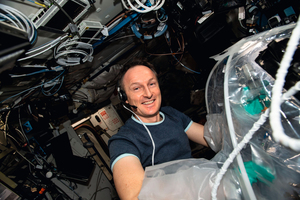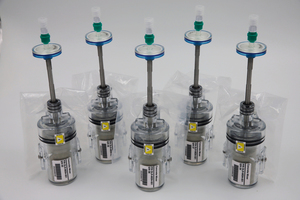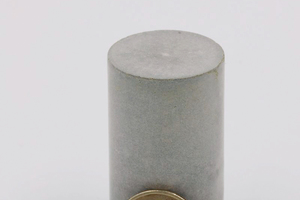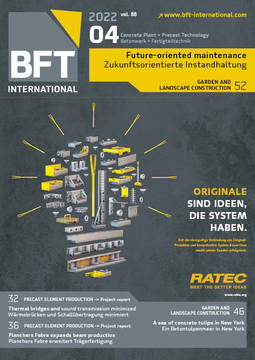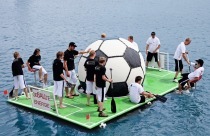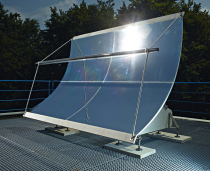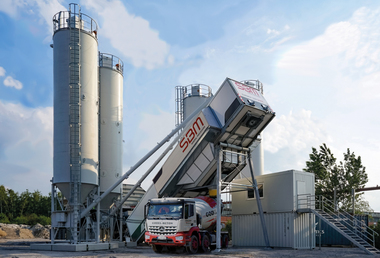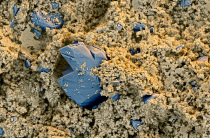German astronaut makes concrete for the first time in outer space
On 11 November 2021, German ESA astronaut Matthias Maurer, together with the other NASA crew team members, lifted off to the ISS international space station. Maurer will stay on the space station and carry out numerous experiments for around six months. The German Aerospace Center (DLR) participates in many different ways in the mission. The German Space Agency in DLR is responsible for selection and coordination of the experiments and contributions from Germany.
During his “Cosmic Kiss” mission, Matthias Maurer will carry out a total of 100 experiments on the ISS International Space Station, including 36 with German participation. In the concrete-hardening project, Matthias Maurer will investigate, for the first time, how various concrete mixes will harden in a zero-gravity environment. Previous experiments on board the ISS were limited to initial hardening of pure cement only.
Mason/Concrete Hardening
“The experiment with the project name Mason/Concrete Hardening is a joint project of DLR, the University of Cologne, the University of Duisburg-Essen and BIOTESC of the Lucerne University of Applied Sciences and Art. It takes place within the scope of the “Cosmic Kiss” mission, as explained by Prof. Martina Schnellenbach-Held of the Institute for Structural Concrete at the University of Duisburg-Essen. “We are investigating, to begin, the possibility of using concrete as construction material for living quarters during Moon and Mars missions. That is the reason why we used Regolith EAC-1A in a number of specimens which simulates aggregate material on the Moon.
This is necessary because, if plans to establish a permanent presence on the Moon were to become reality in the near future, the stations would have to be constructed of solid material and, ideally, with resources that are available on location. Knowledge of material behavior in a zero-gravity environment and the conditions in space therefore represent a crucial basis for exploration. Thus, data obtained within the scope of the Mason project are in the true sense of the word an important building block.”
Sustainability
Another aspect of the investigation is the topic of sustainability. “From the investigation, we expect to gain still better knowledge of the setting behavior of concrete, because we will be able to eliminate the influence of gravitation. The strength development of concrete in a zero-gravity environment is also of interest for exploring the possibilities of resource savings. Thus, for example, concrete formulas that contain less cement could be developed and used in the future,” adds Prof. Martina Schnellenbach-Held.
Easy-to-operate concrete mixers
“The design of a transparent and light mixing facility with which concrete can be manufactured with three levels of containment (LOC) in a zero gravity environment – a built-in three-stage safety concept, so to speak – was a critical prerequisite for the project,” explains Dr. Torsten Welsch, Senior Academic Councilor at the Institute for Structural Concrete at the University of Duisburg-Essen. As planned, the mixing container provides two LOCs. The third LOC functions by work in the Glove Bag – a transparent plastic bag with an opening for access by gloves. “This part of the project has in fact demanded much more work and time than originally assumed, not least due to very extensive safety tests and required certification by the European Space Agency (ESA),” adds Dr. Torsten Welsch.
“Portland cements CEM I 42.5 N and 52.5 R, CEN-standard sand (0/2) or quartz sand (0/0.5) as aggregate were used for the experiment. The dry components are contained in various mix proportions in the mixing containers. On the ISS, the astronaut Matthias Maurer then applied a commercially available syringe that had already been filled on Earth with the liquid components (water, water + superplasticizer or water + air-entraining agents). A low-mineral water was used here. “The mixing process lasted about three minutes for every specimen,” said Julian Müller, M.Sc., Research Associate at the Institute for Structural Concrete (ISC) at the University of Duisburg-Essen.
Together with colleagues at Cologne University and Lucerne University of Applied Sciences and Art, the researchers developed a mixing device to manufacture concrete specimens of cylindrical shape. Dr. Bernd Rattenbacher, Research Group Leader at the Institute of Medical Engineering at Lucerne University of Applied Sciences and Art, and Manager of BIOTESC, added: “We manufactured a small series of around 300 mixers by plastic-injection molding, 64 of which were filled and delivered to the international space station. For conducting the experiment, it was important for us that the mixing containers were transparent to enable Matthias Maurer to closely observe the process during the experiment.”
Detailed investigations of the concrete specimens
In July, the concrete specimens are expected back on Earth for investigation. As Dr. Karsten Tell, staff member at the Institute for Theoretical Physics at the University of Cologne, reported with satisfaction: “On the cylindrical specimens we will be able for the first time to conduct full characterization of concrete hardened in a zero-gravity environment: including CT scans, compressive strength testing and determination of the modulus of elasticity.”
“The hardening process decides on the configuration of the constituents inside the concrete, as well as on the distribution of the air bubbles. On Earth, hardening is strongly influenced by the gravitation. For research on materials, it is therefore of great interest to investigate how this mix behaves without this influence. This enables better understanding of chemical and physical processes,” explains Prof. Sperl, Leader of the Group for Physics of Granular Matter at the Institute for Theoretical Physics at the University of Cologne, and at the DLR in Cologne. These findings can be used for optimized mix proportions which ultimately save valuable resources.
CONTACT
InformationsZentrum Beton
Toulouser Allee 71
40476 Düsseldorf/Germany
+49 211 28048-306

